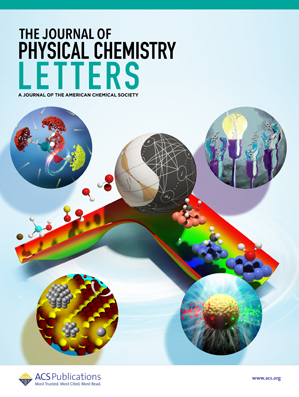利用LIPSS在ITO表面生长MAPbI3单晶薄膜及其应用
IF 4.8
2区 化学
Q2 CHEMISTRY, PHYSICAL
引用次数: 0
摘要
金属卤化物钙钛矿由于其固有的优异的光电性能而成为一种很有前途的光电器件材料。目前,钙钛矿在提高效率方面取得了重大进展,但其工业进步和多场景应用仍然受到制造技术的阻碍。在飞秒激光加工的ITO表面,采用低空间频率激光诱导深度为139 nm的周期表面结构(LIPSS)制备了高质量的MAPbI3单晶薄膜。飞秒激光处理表明,LIPSS周期随激光能量的增加而减小,随扫描速度的增加而增大。同时,LIPSS的深度随激光能量的增加而增加,随扫描速度的增加而先上升后下降。超快泵浦探测实验表明,在低激光通量下,库仑爆炸是飞秒激光与材料相互作用的主要机制,而在高激光通量下,相位爆炸成为飞秒激光与材料相互作用的主要机制。利用FDTD模拟,选择深度为139 nm的LIPSS作为衬底制备MAPbI3单晶薄膜,极大地提高了MAPbI3单晶薄膜的光吸收率。SEM、EDS和XRD分析表明,制备的MAPbI3单晶薄膜具有优良的表面形貌和均匀的元素分布。时间分辨光致发光光谱法得到的MAPbI3单晶平均寿命约为24.05 ns,表明MAPbI3单晶薄膜具有低缺陷密度和较长的载流子寿命。瞬态吸收光谱显示,在高激发通量下,俄歇复合是主要的载流子复合方式,这表明MAPbI3单晶薄膜具有较强的载流子带填充效应和双导带的能量结构。积累的载流子促进了激发态吸收,减缓了复合速度,这对MAPbI3单晶薄膜在光电器件中的进一步应用具有重要意义。本文章由计算机程序翻译,如有差异,请以英文原文为准。
Growth and Application of MAPbI3 Single-Crystal Films through LIPSS on an ITO Surface.
Metal halide perovskite has attracted great interest as a promising optoelectronic device material due to its inherent excellent photoelectric properties. Currently, perovskites have made significant strides in enhancing their efficiency, yet their industrial advancement and multiscenario applications remain hampered by manufacturing technology. In this work, high-quality MAPbI3 single-crystal films were prepared through low spatial frequency laser-induced periodic surface structures (LIPSS) with a depth of 139 nm on the surface of ITO processed by femtosecond laser. Femtosecond laser processing revealed that the period of LIPSS decreases with the increase of laser fluence and increases with the increase of scanning speed. Meanwhile, the depth of LIPSS grows with increasing laser fluence and first ascends and then descends as scanning speed goes up. Ultrafast pump probe experiments revealed that the coulomb explosion dominated the interaction mechanism between the femtosecond laser and material at low laser fluence, while the phase explosion became the main mechanism at high laser fluence. The LIPSS with a depth of 139 nm was selected as the substrate to prepare MAPbI3 single-crystal films based on the spatially confined growth method as it greatly facilitates the light absorption rate of MAPbI3 single-crystal films by FDTD simulation. SEM, EDS, and XRD analyses proved that the MAPbI3 single-crystal films have excellent surface quality morphology and uniform element distribution. The average lifetime of an MAPbI3 single crystal obtained by time-resolved photoluminescence spectroscopy is about 24.05 ns, which indicates the low defect density and a long carrier lifetime in MAPbI3 single-crystal films. Transient absorption spectroscopy revealed that Auger recombination is the primary carrier recombination mode at high excitation fluence, which proposed a strong carrier band filling effect and energy structure with two conduction bands in MAPbI3 single-crystal films. The accumulated carriers promoted the excited-state absorption and slowed down the recombination, which is meaningful for the further application of MAPbI3 single-crystal films in optoelectronic devices.
求助全文
通过发布文献求助,成功后即可免费获取论文全文。
去求助
来源期刊

The Journal of Physical Chemistry Letters
CHEMISTRY, PHYSICAL-NANOSCIENCE & NANOTECHNOLOGY
CiteScore
9.60
自引率
7.00%
发文量
1519
审稿时长
1.6 months
期刊介绍:
The Journal of Physical Chemistry (JPC) Letters is devoted to reporting new and original experimental and theoretical basic research of interest to physical chemists, biophysical chemists, chemical physicists, physicists, material scientists, and engineers. An important criterion for acceptance is that the paper reports a significant scientific advance and/or physical insight such that rapid publication is essential. Two issues of JPC Letters are published each month.
 求助内容:
求助内容: 应助结果提醒方式:
应助结果提醒方式:


